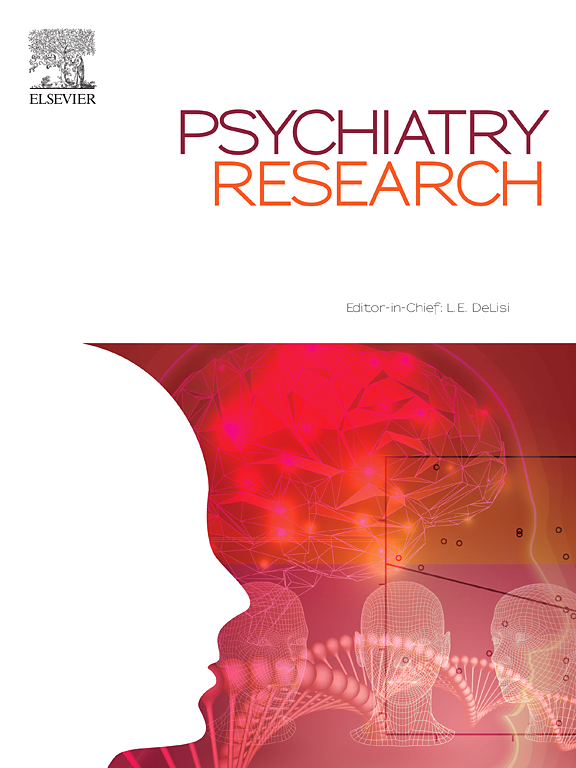Olfactory reference disorder – empirical insights to a new ICD 11 diagnosis
IF 3.9
2区 医学
Q1 PSYCHIATRY
引用次数: 0
Abstract
Olfactory reference disorder (ORD) is defined as a persistent preoccupation with the belief of emitting an offensive body odour, even though no actual odour is present. The ICD-11 has newly introduced olfactory reference to the catalogue of mental disorders, however, standardized assessment tools allowing further research on this diagnosis are scarce. The objective of this study was to test the ORD screening tool (ORD-ST), a questionnaire we developed based on the ICD-11 criteria. The ORD-ST, as well as questionnaires on mental health and questionnaires and tests on olfaction were completed by a sample of 279 participants. The ORD-ST identified three underlying factors: conviction of possessing a perceivable body odor, checking and modification of body odor, and social impairment, together explaining 38.6 % of the variance. Retest-reliability over the course of one week was high to acceptable for the social impairment and checking subscales, and low for the conviction subscale. ORD symptoms positively related to anxiety, depression, and somatic symptoms, but not to olfactory sensitivity and olfactory attitudes. Based on those findings, we generated the hypothesis for an aetiological model of the olfactory reference disorder, in which the transition from temporary to stable beliefs of emitting a perceivable (and offensive) odor marks the crucial transition.
嗅觉参照障碍-对新的ICD 11诊断的经验见解
嗅觉参照障碍(ORD)被定义为一种持续专注于散发令人不快的体味的信念,即使没有实际的气味存在。ICD-11在精神障碍目录中新引入了嗅觉参考,然而,允许对这一诊断进行进一步研究的标准化评估工具很少。本研究的目的是测试ORD筛查工具(ORD- st),这是我们根据ICD-11标准开发的问卷。279名参与者完成了问卷调查、心理健康问卷以及嗅觉问卷和测试。ORD-ST确定了三个潜在因素:确信拥有可感知的体味,检查和修改体味,以及社交障碍,共同解释了38.6%的差异。在一周的过程中,社会障碍和检查分量表的重测信度高到可以接受,而信念分量表的重测信度低。ORD症状与焦虑、抑郁和躯体症状呈正相关,但与嗅觉敏感性和嗅觉态度无关。基于这些发现,我们为嗅觉参照障碍的病因模型提出了假设,在这个模型中,从释放可感知(和攻击性)气味的暂时信念到稳定信念的转变标志着关键的转变。
本文章由计算机程序翻译,如有差异,请以英文原文为准。
求助全文
约1分钟内获得全文
求助全文
来源期刊

Psychiatry Research
医学-精神病学
CiteScore
17.40
自引率
1.80%
发文量
527
审稿时长
57 days
期刊介绍:
Psychiatry Research offers swift publication of comprehensive research reports and reviews within the field of psychiatry.
The scope of the journal encompasses:
Biochemical, physiological, neuroanatomic, genetic, neurocognitive, and psychosocial determinants of psychiatric disorders.
Diagnostic assessments of psychiatric disorders.
Evaluations that pursue hypotheses about the cause or causes of psychiatric diseases.
Evaluations of pharmacologic and non-pharmacologic psychiatric treatments.
Basic neuroscience studies related to animal or neurochemical models for psychiatric disorders.
Methodological advances, such as instrumentation, clinical scales, and assays directly applicable to psychiatric research.
 求助内容:
求助内容: 应助结果提醒方式:
应助结果提醒方式:


